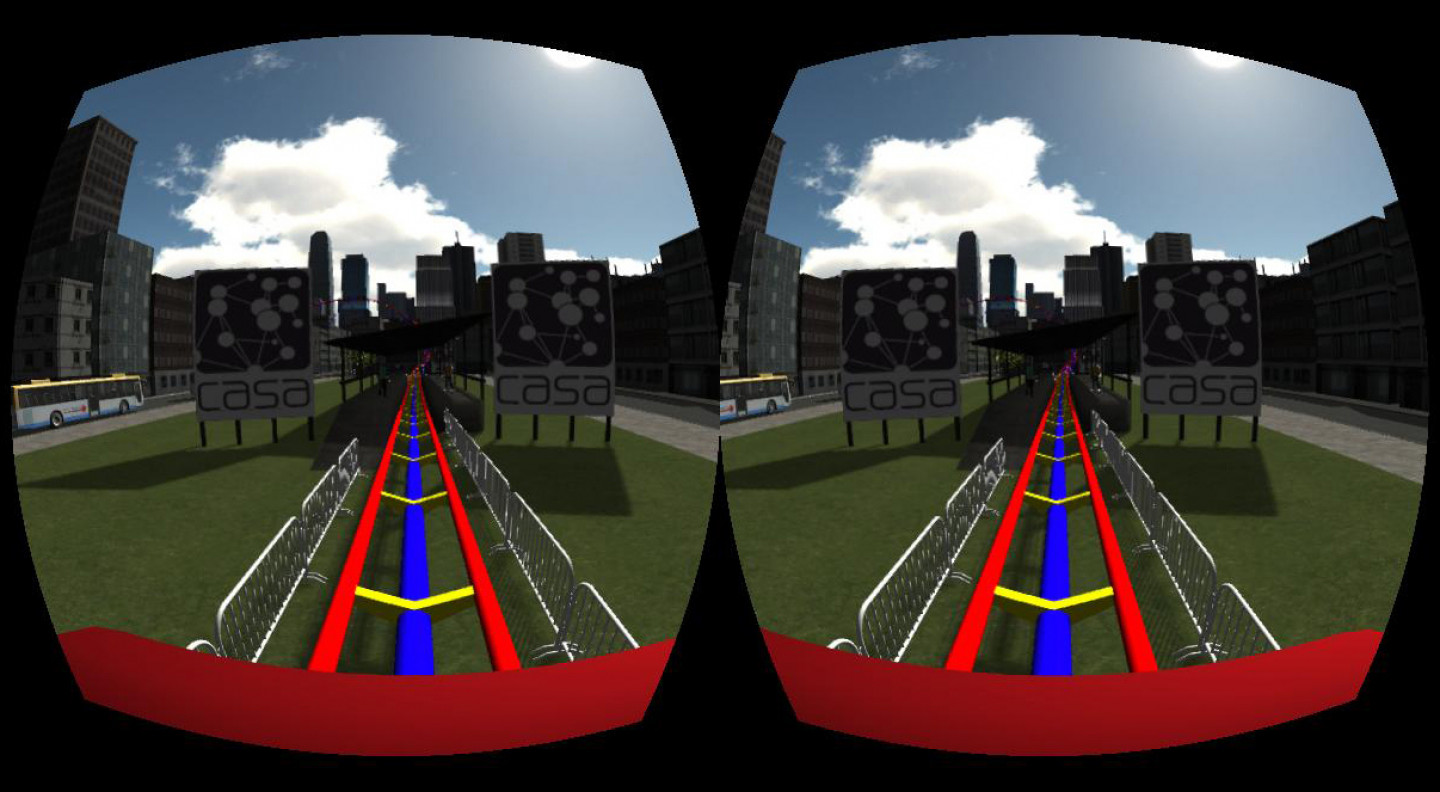Interview with Andrew Hudson-Smith/Oliver Dawkins, The Bartlett
Virtual reality (please be seated)
Urban Rollercoaster by The Bartlett Centre for Advanced Spatial Analysis, University College London
Software: includes Autodesk 3ds MAX, ghostTown Lite, Unity Asset Store. Hardware: Oculus Rift virtual reality headset running on PC with Alienware.
Created at CASA and first presented at the Grand Designs show, this presentation shows how virtual architectural experiences may entertain and inform. They can become a new tool to engage heightened interaction with architecture, either as an indicator of a future building or as an alternative to ‘real’ experience. This cityscape and track is in a fantasy landscape and the rollercoaster simulation is deliberately restrained – there are no loop-the-loops as the VR experience may be just too disorientating for the inexperienced.
Context
How does the Rollercoaster Oculus Rift experience sit with the CASA work in general and is coding for computer gaming part of the course? What was the brief or inspiration for this work?
Andrew Hudson-Smith/Oliver Dawkins: Coding, urban data and visualisation are a key part of the Masters courses at CASA. As such the Oculus Rift Urban Rollercoaster project was a look towards the future, using a pre-release development kit and gaming software to provide a ride through an urban environment.

(Courtesy of The making of the CASA Urban Roller Coaster)
Research
There is a rich history of computer games using architecture and the built environment, is there much research around this?
Andrew Hudson-Smith/Oliver Dawkins: Gaming software such as Unity or the Unreal Engine should be a core part of the architect’s, planner’s and urban designer’s toolkit. They enable real-time visualisation using navigation systems that the public are familiar with. Thankfully the days of week long render times for an architectural visualisation are gone, we can now visualise, edit and walk around our future urban environments in real-time.
Making
What kinds of tools did you use to build the visualisation? How many worked on the project?
Andrew Hudson-Smith/Oliver Dawkins: The work was carried out by Oliver Dawkins in CASA. The main tools used were Autodesk 3Ds Max and Unity.

(Courtesy of The making of the CASA Urban Roller Coaster)
Did you test it yourself while making it?
Andrew Hudson-Smith/Oliver Dawkins: A series of user tests were carried out to ensure that motion sickness was not an issue and that the ride could be enjoyed by all ages.
The Visual
The image is still a representation, but it’s also more than that. How would you describe this ‘image’? What was the response from the public?
Andrew Hudson-Smith/Oliver Dawkins: The response has been fantastic, the smiles and the wonder when realising you can look all around the virtual environment. It is an early glimpse into the future of urban visualisation. More than an image it is an interface, with the sense of immersion arising out of the possibilities for interactivity that it provides.
Futures
How do you think this kind of tech could be used in the future by architects or urban planners? Were there any lessons you will take to professional visualisation projects?
Andrew Hudson-Smith/Oliver Dawkins: The work was created as a proof of concept. Our next plan is to put a 3D model of London into the scene and ride the coaster around the Shard. While viewing a future London skyline live data will be streamed in to create the sense of a living future city. Systems such as the Oculus Rift are the future of architectural visualisation, and of the planning system as a whole: we can finally build worlds that are yet to exist and then fully immerse ourselves within our future urban environment.
For more detail on the making of the project click here



